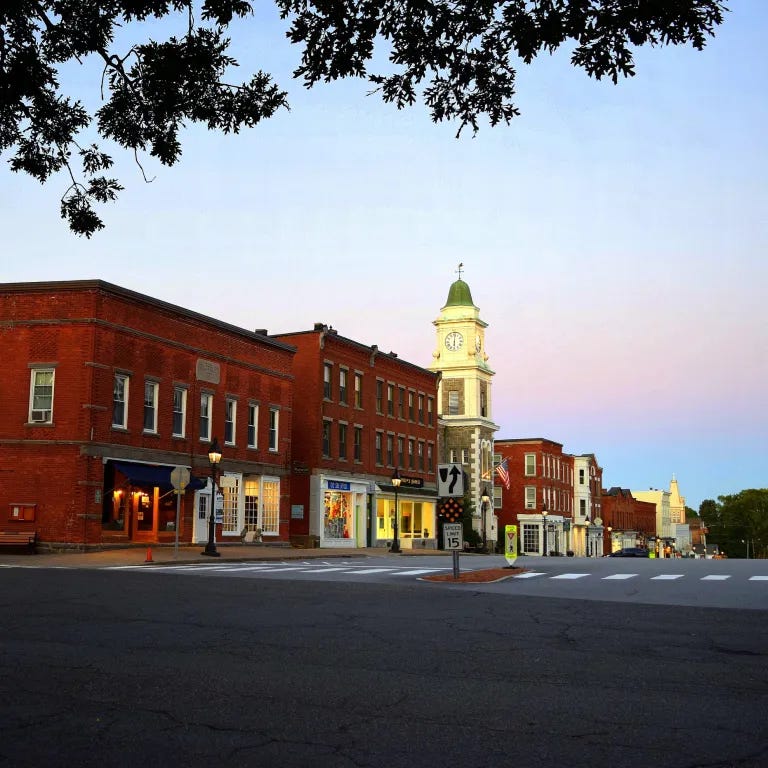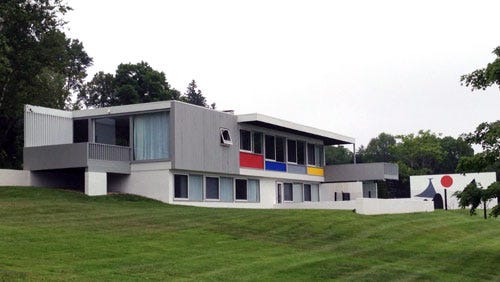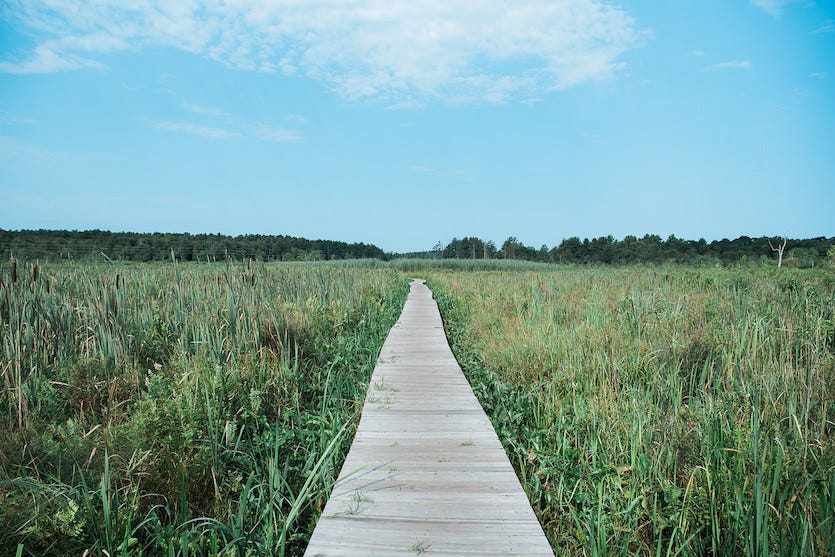w-report #33 A Revolution in New England
Gisela Williams travels in and around her hometown of Litchfield, Connecticut and discovers that history repeats itself, not just in negative, but also positive ways.
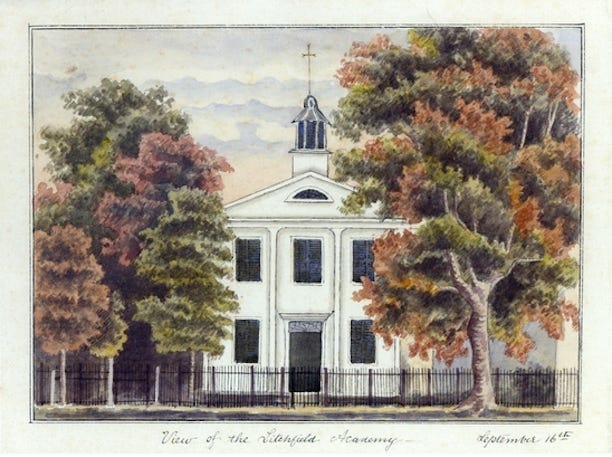
A month ago I flew to NYC to celebrate the wedding of two friends who I have known since my 20s. It was such a joy, as well as a luxury, but thanks to the havoc that Trump and his administration is reaping onto the US, at least the airfare was cheap. (Understandably, very few people want to travel to America at the moment).
I get it. I do. But I am here to say that there are still many corners in the US that are not just beautiful but also inspire.
Last summer as I researched a story for the London’s Financial Times for the HTSI about the cultural renaissance happening in my birthplace—the Litchfield Hills in northeastern Connecticut—I had the opportunity to dig deep not just in the history of the area but also into my own history. It was an extremely rewarding task that made me feel a little bit hopeful for the future.
THE LITCHFIELD HILLS—a bucolic region of almost a thousand square miles in the northwest corner of Connecticut—about a two hours drive from NYC- dotted with dozens of charming historic colonial towns—have always attracted a certain intellectual creative set: the artist Jasper Johns; Diane von Furstenberg; Graydon Carter, the former Editor in Chief of Vanity Fair; the artists Carroll Dunham and Laurie Simmons, husband-and-wife (and parents to Lena Dunham); and the philanthropist and collector Agnes Gund. In the 50s the artist Alexander Calder threw raucous parties at his house in Roxbury; Arthur Miller and Marilyn Monroe were often in the mix. By the time the 2000s rolled around though, it seemed that the area was stagnating; the next generation of successful New Yorkers appeared to rather want to build big McMansions in the Hamptons than renovate historic colonial estates.
But covid shook things up. Suddenly I noticed that a younger and cooler crew started to move in. One morning at Smithy’s Café and Market (one of my favorite breakfast/lunch spots) in New Preston, I met up with stylish curator Abby Bangser, founder of the art and design fair Object & Thing, who had recently moved with her family into an old lake house. She immediately bumped into another curator friend, who worked for Hauser + Wirth. They were raving about a great new restaurant in West Cornwall called The Pink House.
WHAT WAS GOING ON? In the last year, three boutique hotels opened in Litchfield alone: the charming Lost Fox Inn (think stone fireplaces, old wood floors and a pub-like restaurant); the Abner (located in what was once the courthouse) and most recently the Belden House, opened by Anthony Champalimaud and his mother, Alexandra Champalimaud, the celebrated designer behind the reinventions of some of the world’s most celebrated historic hotels, from Raffles in Singapore to most significantly, the Algonquin Hotel (home of the legendary literary Round Table) in Manhattan. In 2017 the two of them had opened the long anticipated Troutbeck, an inn with 37 rooms and an excellent restaurant fashioned after a British country house hotel on a 250-acre estate across the border in New York State.
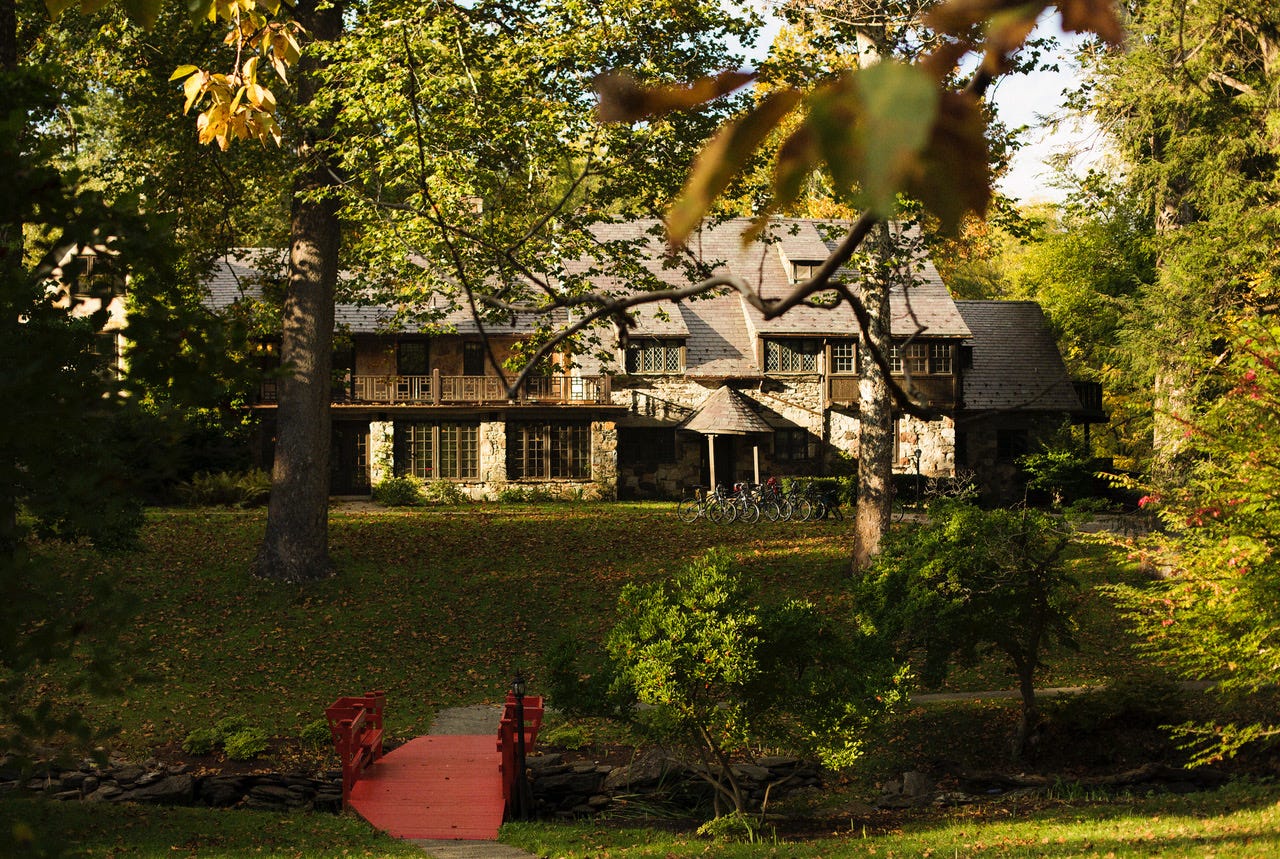
Anthony Champalimaud, who now lives in an 18th-century house on North Street in Litchfield with his family, described the town for my HTSI story as a place that is “the best of two worlds: both historically significant and vibrant with contemporary culture.” He noted that the region has always been a place for established New Yorker families to “socialize, be productive and live closer to the land and community but they didn’t come here to peacock.”
In my research I discovered that since Litchfield was founded in 1719, over the centuries my hometown had been — several times— a hotbed for revolutionary social change. In the lates 1700s Tapping Reeve opened the country’s first law school on South Street. Just down the road a few years later, the early feminist Sarah Pierce has founded the Litchfield Female Academy, at the time one of the most important schools offering female education in the United States. One of her students was the American author and abolitionist Harriet Elisabeth Beecher Stowe.
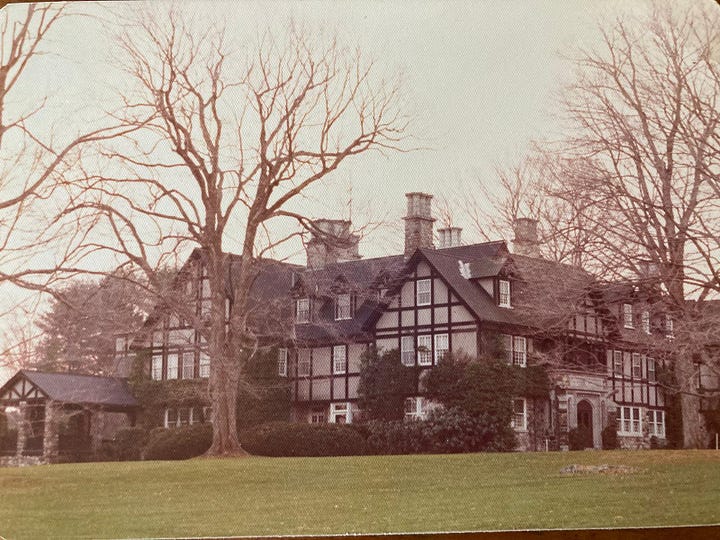
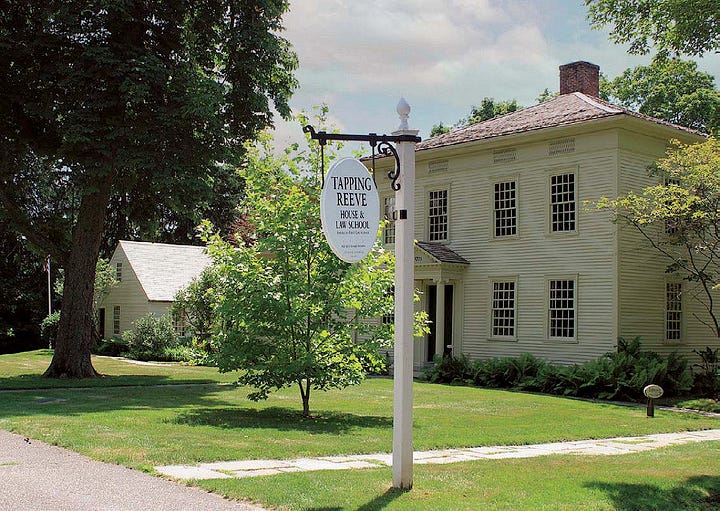

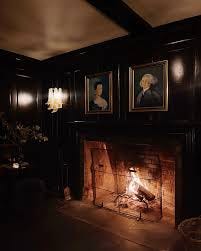
Then, a century later, around the turn of the 19th century into early 1900s, a significant number of the progressive thinkers behind the cultural development and social politics of a humane and innovative America, built country homes within the celebrated golden triangle of real estate in between Duchess County New York, the Litchfield Hills and the Berkshires of Massachusetts.
My father’s family was one of them: In the early 1900s, my great-grandmother Constance Baillie Ripley, an early supporter of the Girl Scouts and the Museum of Modern Art, hired Henry Janeway Hardenbergh, the architect of Manhattan’s Plaza Hotel, to build a Tudor-style mansion in Litchfield that she dubbed the Kilravock. (When I was ten, it burnt almost completely to the ground. All that remains today are the expansive lawns, guest cottages and tennis courts; only a few old locals remember the rambling house that was once stood there or the spirited conversations that took place in its grand, oak paneled dining room).
About fifty years before Kilravock was built and a 45-minute drive west, the poet and naturalist Myron Benton was growing up on Troutbeck. A great friend of Henry David Thoreau, Benton hosted literary soirees in addition to farming the land. In the early 1900s the estate was bought and taken over by Joel and Amy Spingarn, who continued the tradition of literary and political circles; Sinclair Lewis and Thurgood Marshall were frequent guests. In 1914 the Spingarns initiated the Spingarn Medal, one of the most prestigious annual awards given annually by the National Association for the Advancement of Colored People (NAACP).
Another significant moment in Litchfield’s history was sparked by one couple: Rufus Stillman, and his wife Leslie. In 1949 the couple had seen the architect Marcel Breuer’s exhibition house at the MOMA; shortly afterwards they invited the Bauhaus-trained architect to build a house for them.
The director James Crump who wrote and directed the 2021 documentary Breuer’s Bohemia lives in another Breuer house, commissioned by the Stillmans a decade or so later, just outside of Litchfield with his wife, the art historian and collector Ronnie Sassoon. “I think about the Stillmans all the time,” Crump told me for my HTSI story. “He was a firebrand. After World War II he came back wanting to create a better world for his community and family.”
Thanks to the Stillmans, the middle school I attended was designed by John M. Johansen and my high school was designed by Marcel Brauer. The modern extension of the library I spent half my childhood in was designed by yet another one of the Harvard Five: Eliot Noyes. Did those architectural spaces shape the thinking of generations to come? It’s hard to say, but I imagine a few seeds of progressive thinking were sown over the years.
We often say: may history not repeat itself. This is especially true now. Yet…. at the same time, I realized in my excavation of my New England roots, that there are also examples from the past that should inspire us forward. Let a new, positive, revolution begin again where it all started.
MAWA! (MAKE AMERICA WORK AGAIN)
SOME EXTRA LITCHFIELD HILLS INTEL
IN LITCHFIELD/BANTAM:
BEST ICE CREAM: Only in Litchfield is the dairy farm run by former executives at Manolo Blahnik. Check out Arethusa’s outlets, especially the ice cream shop, in Bantam.
MARTHA STEWART’S FAVORITE FLOWER POTS : The potter Guy Wolff. His reproductions of historic pots, which he produces from his 18th century home in Bantam, was discovered in the 90s by Martha Stewart.
THE PREPPY HANDBOOK Oliphant is a colorful gift and clothing shop that is very Palm Beach meets New England preppy.
FOWL PLAY My great uncle was a famous ornithologist and his daughter Rosemary Ripley continues to evolve the family’s legacy with the Ripley Waterfowl Conservancy which one can visit on the weekends.
NATURE WALKS The White Memorial is Connecticut’s largest wildlife sanctuary with a natural history museum, nature center and 35 miles of hiking trails.
IN WASHINGTON DEPOT/NEW PRESTON:
SPLURGE: Another great (but $$$) place to stay in the area is the Mayflower Inn & Spa. Rates start at $990. A charming hotel with extensive spa and restaurant on 58 acres in Washington Depot which was reinvented a few years ago by socialite interior designer Celerie Kemble.
CULT BOUTIQUE The Privet House is a much loved home emporium in New Preston that offers an aesthetic mix of vintage furniture and books along with gardening accessories, Belgian linens and Cire Trudou candles.
BOOK MECCA The Hickory Stick Bookshop is my absolute favorite bookstore in the world, run by two lovely older ladies. An excellent independent bookstore that often hosts events with local authors.
BEYOND THE CONNECTICUT BORDER
It’s worth it to cross the border to New York State not only check out Troutbeck but to have a meal at the Stissing House : excellent tavern fare like pheasant with juniper and vermouth, in a charming 18th century inn overseen by respected chef Clare de Boer.





